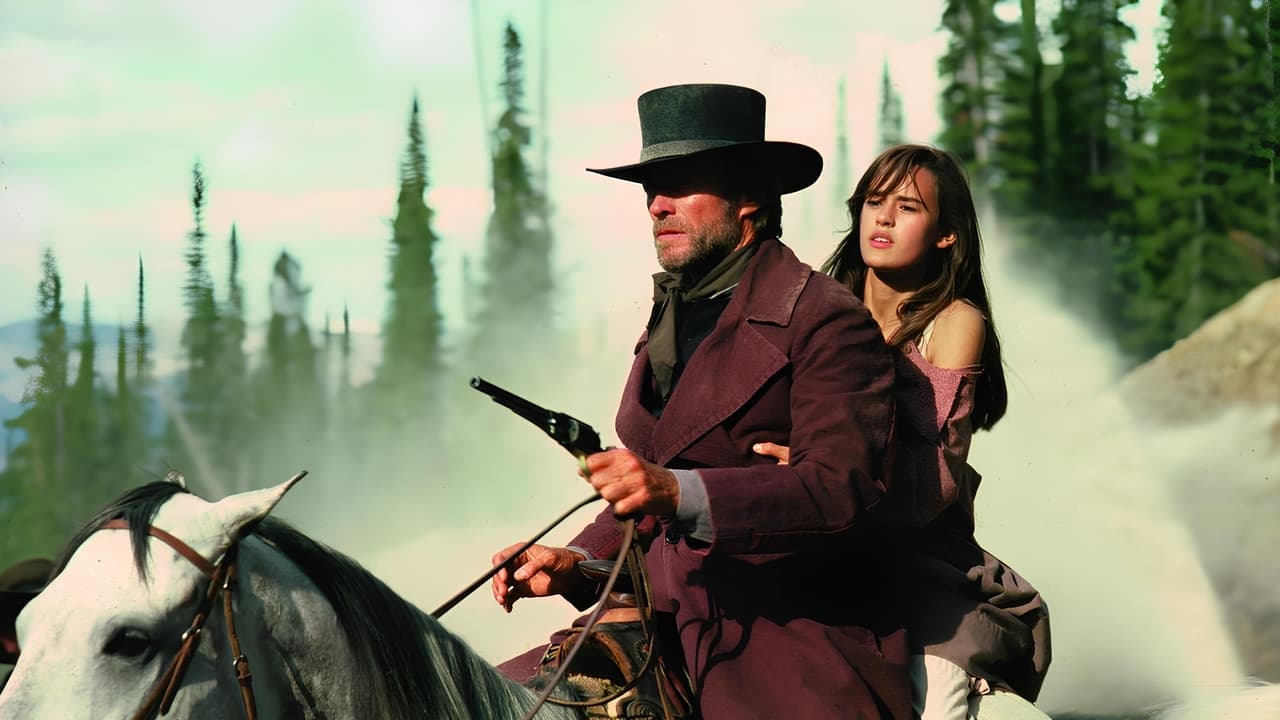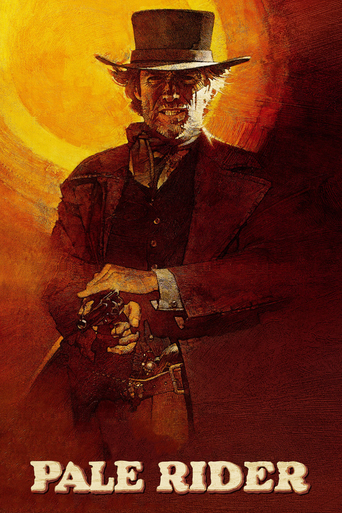

Directed by and starring Clint Eastwood, pale rider is a must-see for fans of the western genre. Clint Eastwood portrays the enigmatic preacher; a strong/silent type that we've become so accustomed to. Frankly, Eastwood carries this movie as his gunlinging preacher steals every scene. Unfortunately this movie is not without its faults. The movie supporting cast weigh this movie down in a lot of scenes. The characters of mother and daughter, Sarah and Megan were unbearably annoying and made some scenes quite awkward. The villains of lehood and stockburn are quite forgettable but service the plot enough to make it work. Overall this is a cool western with a great story and a faultless performance from Eastwood.
... View MorePale Rider is the only western Clint made in the 80's and while there are slim pickings for westerns in that decade, Pale Rider is in my opinion the best western made in that era. Pale Rider is best described as a combination of Shane and High Plains Drifter. The storyline is almost identical to that of Shane, but has the brooding, supernatural tone of High Plains Drifter, with the unique bad ass presence of "The Man With No Name" as only Eastwood can bring. Clint is a stranger that comes into town known only as Preacher. He rights some wrongs for folks who are not strong enough to stand up for themselves, while settling his own scores and bringing retribution for events of the past. The film looks sharp, moves fast and has great dark ambiance with an excellent score. The support cast is solid and Clint is in top form in front and behind the camera. Pale Rider is a classic western that only Clint can make and a very enjoyable and well made one it is.
... View MoreAfter the engrossing 'Unforgiven', I went to this movie. Maybe that is the reason I was not much impressed by it. I even believe that the movie is overrated.The script is stereotypical but somehow seems lame to the other Western ones ! Well, the Christian concept of 'Pale Rider' is intriguing(destroying an 'evil empire' by sword, pestilence, famine and wild beasts) but there was no need for the central character to wear a clerical collar, then people take him as a 'Preacher' and the audience is expected to connect him to the biblical 'Pale Rider'. It seems a trick unworthy of noticing but dilutes the intention. Megan reading the Psalm(or verses, I am naive at the term) would have been sufficient.Eastwood, as always, has given full justice to the character - the sangfroid when meeting the goons, LaHood and even while eliminating the deputies. The demon underneath seems to arise only twice in his eyes which Eastwood should be given a notable credit ! Except the 'Preacher', Hull Barret is the only character that leaves some impression - he is a common, vulnerable man but still does his best for the family and the folks. The Stockburn's character seems like a last-moment patch implemented in a software to save the script. Fails to impress even for a second as a villain. Better than him is LaHood who at least in some scenes appears to be a professional mining mafia/don.Frankly, I didn't even notice any background score - that itself speaks of it's lameness :P . Since the script revolves around the camp, the mine and the town, one is deprived of the typical Western panoramas, the horse riders amidst terrain and so on. The town too appears modern and synthesized, lacks the dull and the creaky yet appealing look of a troubled Western stereotypical town.To summarize, one should watch the movie only for a glimpse of the vintage 'Western Eastwood', any more expectations can result in disappointment. Yes, the movie has rekindled my old interest in 'Apocalypticism' :) .
... View MoreThis is a good movie for a free afternoon, with some wisdom and interesting characters, but that has suffered the pass of time in his visuals and in the way the plot develops.The plot of "Pale Rider" is easy enough that anyone will understand it: some people live in a small settlement where they search for gold, while the bad guy and his henchmen want to force them out and try to scare them constantly. After their last attack to the settlement, where they injure some of the people, break everything they can and kill a dog, the young Megan, the owner of the poor animal, asks for help while burying the little fellow, and, voila, Clint Eastwood, appears. I say Clint Eastwood because we have here the hard-looking, tight-lipped, no-time-for-silliness portrayal that made him famous in his spaghetti-westerns. It may be "Preacher" but it's not so far away from his other portrayals of mysterious gunslingers who will not stop for anything till they finish their mission.Even if it is not very original, the movie is good. The actors are good and do a great job to go through some ambiguous moments (as when they have to decide if accepting an offer to leave the settlement), even if it is a story of bad, very bad, and good, but flawed, people. Clint Eastwood is as good as ever, bigger than life, expressing a lot without doing actually much. The best part is seeing the struggle of all the people that have to live in a hard world, without knowing what will come tomorrow and if there is a point in what they are doing. If you like westerns you will enjoy it, and if you like Clint, probably too.
... View More